Innovation opportunities in the Polyclinic of Palermo
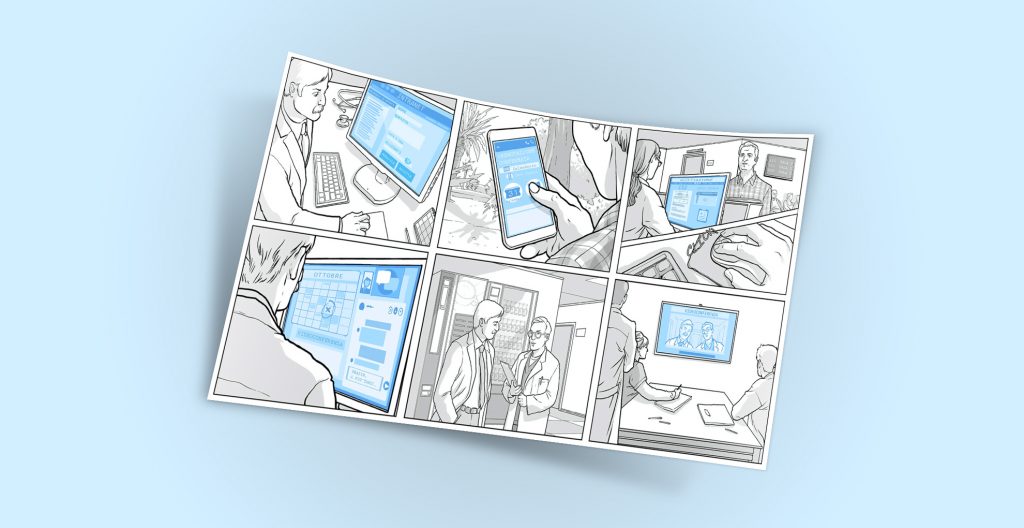
Innovation opportunities in the Polyclinic of Palermo Policlinico Giaccone Share Understanding the user experience in the hospital to bring incremental innovations to its clinic services 3 things to know Flexibility and adaptation An iterative approach throughout the project allowed us to adapt the analysis on the hospital context, its rules, and emerging unexpected opportunities. Observe, understand, create bridges Understanding behaviors and expectations of users, doctors and professionals was essential to respect the equilibrium between different perspectives in the hospital context. Deliver innovation pills Experientia proposed small solutions that could have a great impact on users (patients and HCPs) and that could be more easily integrated into the complex system of a University Hospital. Gallery In depth Service mix: Prototyping Participatory design Service design Behavioral modeling Ethnography Challenge We carried out a user centered design project within the University Hospital Polyclinic Paolo Giaccone of Palermo with the aim of generating innovative ideas to be deployed in its clinics in the area of cardiology, oncology, opthalmology and haematology. Following a participatory process, we involved the clinics’ medical staff in research and generative activities, detected two concepts and prototyped one of them. Research We conducted contextual interviews and shadowing for one week in 5 clinics in the Polyclinic, with physicians and nurses, their heads, and other primary actors in the clinic under study (e.g. postgraduate doctors, psychologists and administrative staff). This research allowed us to understand the functioning of the complex hospital system in the specific context of outpatient visits, aiming to propose solutions benefitting both HCPs and patients. Design Based on the workshop results, two design concepts were presented, one focused on effective communication between health professionals and the other on the welcoming and orientation of the patient. Considering the boundaries of the project, we decided to further develop the first concept, to illustrate it with a use scenario, and to integrate with a high level prototype aimed at showing functionalities of the main hospital software that could be implemented in order to facilitate interdepartmental communication. Impact The solution aims at facilitating collaboration – both between healthcare professionals within the same ward, and with other hospital facilities – through the optimization and integration of the functions of the Hospital Intranet and the creation of opportunities for meetings between healthcare professionals. Related projects All Services Behavioral design Research and assessment Strategy Health GoCare: Interactive dashboard for a better home hospitalization service Health Rare disease patient journey mapping HealthSocial innovation Singapore: a city for people aging gracefully Go back to our portfolio
XME Salute: integrating insurance offerings with wellness and health practices
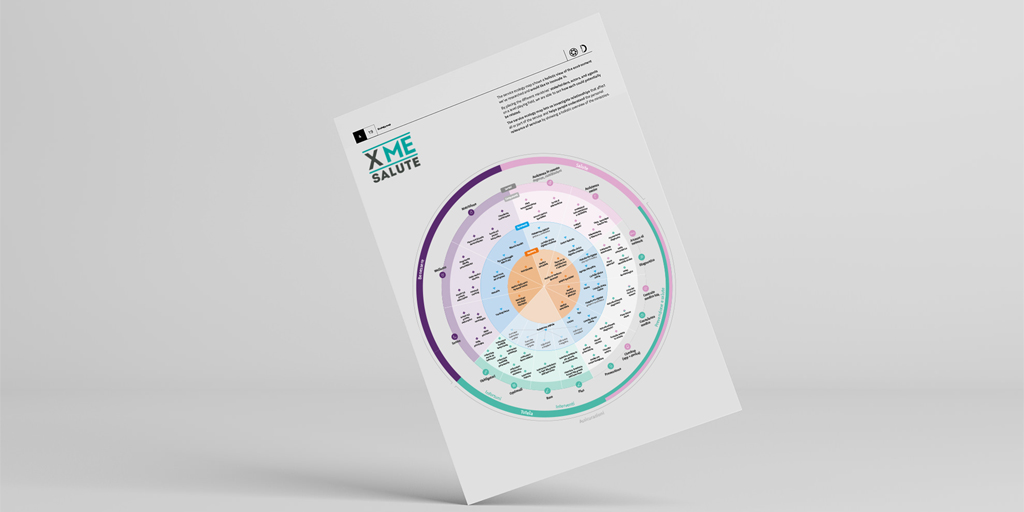
XME Salute: integrating insurance offerings with wellness and health practices Intesa Sanpaolo bank Share Analysis of the areas of overlap between welfare practices and insurance offering, up to the realization of a banking product able to enhance them both. 3 things to know Redefine the meaning of “insurance product” Research results allowed us to identify behavioral patterns regarding the attribution of value and meaning in health and wellbeing areas, and define hypothetical use scenarios on how to involve users in a holistic self-care. Facilitating and enabling behavioral change Based on an analysis of the offer and on the formative evaluation, we were able to create a better definition of the service model and a detailing of pre-requirements to convey this service through digital/web and mobile platforms. Drivers of behavioral change We analyzed drivers of behavioral change such as Environmental & Life Constraints, Motivation and Belief, Social Pressure and Constraints, Cultural Frameworks, and Architectural and Interface Affordances. Gallery In depth Service mix: Prototyping Information architecture User experience testing Behavioral modeling Useful links: Link to XME Salute Service by ISP Context Since the middle of the last decade, the phenomenon of private healthcare insurance in Italy has increased regularly: in 2016, 10 million Italians declared that they had private healthcare insurance, and the reason for the choice is due to a fundamental reason that prevails over everything else: the length of waiting lists (72.6%). To deal with a context in which users give up medical treatment because it is too expensive, Intesa Sanpaolo has launched an innovative service, able to integrate wellness practices (e.g. improving nutrition, sleep, …) with easy access to a network of clinics in which to book online medical examinations, diagnostic tests, dental and physiotherapy services. Challenge The Intesa Sanpaolo Innovation Center turned to Experientia for ongoing support in defining value propositions for its new set of services, called XME Salute (“Health 4 me”). We investigated behaviours, values and convictions people have on themes such as wellness, health and their relation with insurance products. Research Research results allowed us to identify some behavioral patterns regarding the attribution of value and meaning among health and wellbeing areas, enabling us to create hypothetical use scenarios to understand how to involve users in a holistic self-care. We analyzed drivers of behavioral change such as Environmental & life constraints, Motivation and belief, Social pressure and constraints, Cultural framework, Architectural and interface affordances. Design Based on the offer and the formative evaluation, we were able to better define the service model and detail some pre-requirements in order to convey this service through digital/web and mobile platforms. Impact Health services are an important testbed for the cultural change required by digital, so it is essential that the service model provided remains consistent with the initial design: for this reason, since the launch of the service (June 2019) we have continued to follow the evolution of features in order to keep them consistent with the service model. Link to XME Salute Service by ISP Related projects All Services Behavioral design Research and assessment Strategy Consumer technology Buttonless: engaging users in interactions with keyless devices B2B Collaboration UI, redesigning the filter navigation experience Cities & InfrastructureSocial innovation ToNite: social innovation and urban regeneration in Turin, Italy Go back to our portfolio
Singapore: a city for people aging gracefully
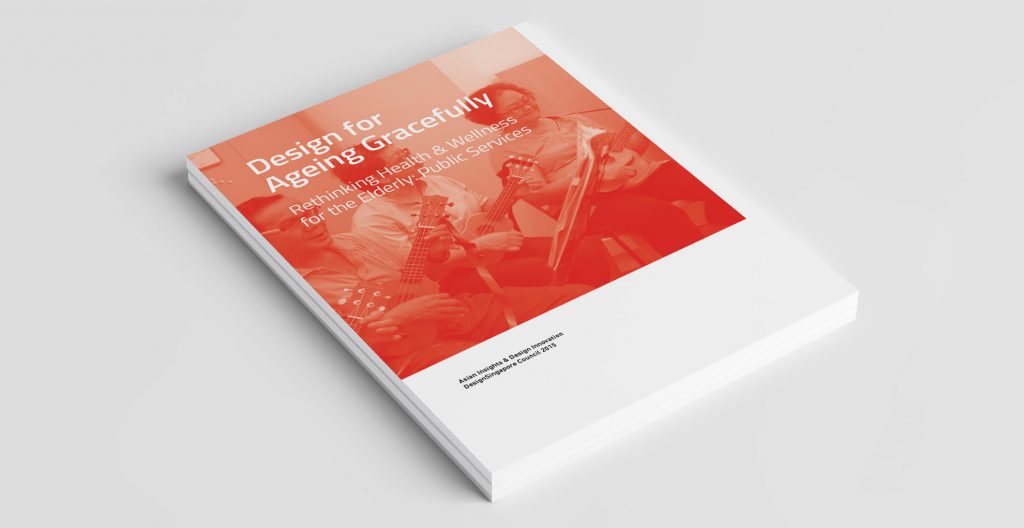
Singapore: a city for people aging gracefully DesignSingapore Council Share DesignSingapore Council asked Experientia to explore health and wellness for the elderly in the Singaporean public sector. We conducted ethnographic research and participatory design workshops, as part of a drive to develop design-led innovation for the health industry. 3 things to know Design ethnography and service design Experientia explored current healthcare experiences of the aging population in Singapore through design ethnography identify opportunities for design-driven innovation in public healthcare. We identified opportunity areas for design-driven innovation in the Singaporean public healthcare space to help Singapore create the right conditions to support a rapidly aging society. Interactive map of findings The interactive map allows people to browse the personas alongside field research videos, that communicate the research findings in the participants’ own words. Long lasting impact The findings have been incorporated in the Health Ministry’s ongoing Action Plan For Successful Ageing, and guided the development of a new residential impact. Gallery Singapore is proactively addressing the problems of a rapidly aging society We explored what is like to grow older in Singapore today, carrying out contextual interviews and shadowing with elderly people, their carers, and people with the healthcare industry. In participatory design workshops with Singaporean stakeholders, we introduced experience design guidelines and created concepts and strategies to improve the elderly healthcare system in Singapore. Our 8 personas show different experiences of aging and using the healthcare system in Singapore. Our customer journeys maps show the typical issues the participants experiences as they tried to manage their health. In depth Service mix: Design thinking Policy development Envisioning Participatory design Service design Behavioral modeling Ethnography Useful links: Download the pdf English language Website External link Singapore press External link Press release External link Press article External link Press article External link Context By 2030, Singapore will experience a profound shift in its age demographics with the elderly population increasing by three times. This calls for a radical change in perspective on how care can be better delivered to the elderly. Challenge To prepare and plan for that change, The DesignSingapore Council’s Asian Insights and Design Innovation (AIDI) programme embarked on a Rethinking Health and Wellness for the Elderly project to look into developing design solutions that better meet the needs of the elderly in Singapore, and asked Experientia to carry out an extensive research and analysis project , including a workshop with participating public agencies and services from the Singapore healthcare system. Research The project started with an understanding of global trends in elderly healthcare services. This was then followed by a design ethnography study through interviews and shadowing – to gather deep qualitative insights into the habits and behaviours of the elderly and to identify trends, behaviors and gaps in the interaction between elderly people and the healthcare system. From the observations, we learned about how the elderly think, act and feel towards managing their health at home and their needs and wants. Experientia developed 8 personas to begin the process of designing for behavioural change and explore solutions like ageing-in-place, peer-to-peer support and community platforms to solve some of the elderly healthcare issues. Participatory workshops allowed stakeholders from the public to be part of this process generating 12 main user-centred design concepts. In two multi-day innovation workshops with healthcare and public service stakeholders, representatives from the healthcare industry and public sector joined Experientia and DesignSingapore Council in Singapore. Here we introduced the challenges the participants face on a daily basis, showing video clips from the research to reveal the human faces behind the research. The stakeholders developed service concepts that would suit the unique characteristics of Singapore. Design Experientia team designed an interactive map of findings, a rich database resource that invites stakeholders to explore and be inspired to innovate and design relevant solutions for the ageing population. The concepts were useful to guide Singaporean healthcare agencies to create strategies, policies and services. The results of the project were compiled in a handy publication for further use in Singapore and freely available for anyone. As part of the project, Experientia also worked with Singaporean agencies and ministries to devise community-focused concepts for elderly residents in the Kampung Admiralty residential block. Co-creation workshops prototyped key policy decisions on ageing, health and housing. Impact Experientia’s report recommendations were widely reported in the Singapore press and were integrated in the Government’s $3billion Action Plan for Successful Ageing (website – pdf – press release – press article). The Kampung Admiralty residential block has been completed. It incorporated many of the concept ideas that were co-created in the Experientia-lead workshops. Download the pdf English language Website External link Singapore press External link Press release External link Press article External link Press article External link Related projects All Services Behavioral design Research and assessment Strategy Cities & InfrastructureSocial innovation ToNite: social innovation and urban regeneration in Turin, Italy Health GoCare: Interactive dashboard for a better home hospitalization service Health Rare disease patient journey mapping Go back to our portfolio
Rare disease patient journey mapping
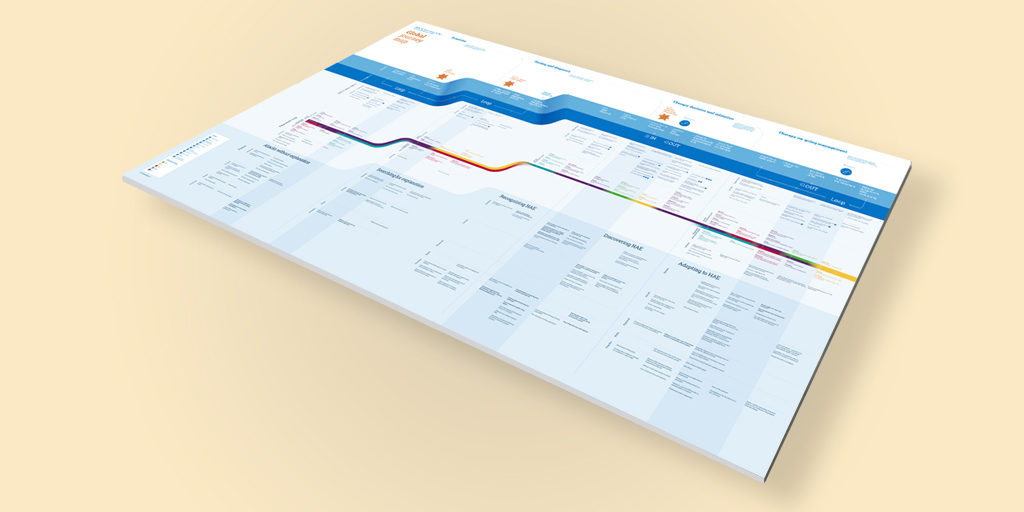
Rare disease patient journey mapping Client confidential (pharmaceutical company) Share A global-to-local approach to represent the patient experience. 3 things to know A toolkit that guaranteed quality and consistency of patient journey mapping process We aimed at redesigning the patient journey maps so they would look consistent throughout the different medical areas of the company and therefore improve usability. Patient experience and emotions at the center We gathered reports from many departments, both medical and commercial and grouped key patient insights in one reference file. At a glance you can gain a good understanding of the patient experience, emotions, behaviors and actions. Face-to-Face validation sessions with cross functional client teams Being able to gather feedback first hand from the expert teams as well as bringing them together in a room has opened up the possibility for great collaboration and future development opportunities. Gallery In depth Service mix: Business strategy design Participatory design Service design Behavioral modeling Ethnography Context Modern pharma companies need to align teams worldwide around a shared global patient journey to guide coherent service design and implementation. This global-to-local approach supports independent, local innovation by providing a shared, global representation of the patient experience, facilitating the company’s patient-centric approach through user-centered design. Challenge This four-month collaboration with the Global Patient Services team of the pharmaceutical company included desk research, journey map information architecture and visual design, pilot testing of a custom localization toolkit, and global patient journey in three local country offices, and iteration for global distribution. Research Our researchers read and evaluated numerous ethnographic research reports, market research summaries, and patient stories in the public domain. Analysis focused on determining the patient journey and distinguishing it from assumptions made from doctor, Pharma, and other stakeholder points of view. Design We developed a journey map representing the global patient journey from first symptoms through a lifetime of ongoing management of the disease. We then developed a “localization toolkit” – a workshop in a box – integrating bespoke activity templates and a recommended agenda to customize the global journey map and patient model to a country’s unique context. Impact Numerous teams have used journey mapping in the past, even for specific rare diseases. Our approach provided added value by integrating emotions, relationships, and the patient’s evolution over time. Designing a journey map of a multi-stakeholder process is the tip of the iceberg. Significant critical design and communication efforts were focused on communicating the impact of switching from a therapy to patient point of view. Related projects All Services Behavioral design Research and assessment Strategy Health GoCare: Interactive dashboard for a better home hospitalization service HealthSocial innovation Singapore: a city for people aging gracefully FinanceHealth XME Salute: integrating insurance offerings with wellness and health practices Go back to our portfolio
GoCare: Interactive dashboard for a better home hospitalization service
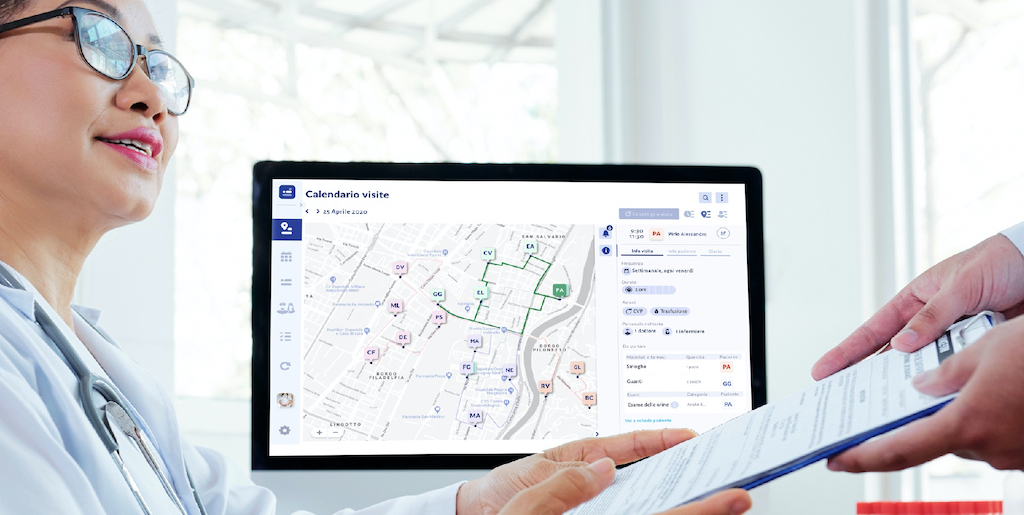
GoCare: Interactive dashboard for a better home hospitalization service CANP European Research Project Share In the context of the European research project CaNP* (“Casa Nel Parco”), Experientia conducted qualitative interviews, shadowing activities and participatory workshops to identify weaknesses and opportunities to improve the home hospitalization service of Molinette di Torino. Based on this research, the GoCare interactive dashboard was designed and validated. (* application 320-12 with co-financing of POR FESR Piemonte 2014-2020) 3 things to know Easier and faster visit management GoCare helps healthcare professionals to significantly reduce time spent on planning the schedule of visits, by analyzing and cross-referencing the relevant data – including patient priority and complexity, geolocation, and the healthcare staff’s shift. Improved communication between stakeholders Communication between caregivers and medical staff is facilitated through simultaneous access to a shared information center with visit schedules and patient monitoring. Data driven decision making The platform provides digital assistance and data to make daily decisions, just a click away. Gallery In depth Service mix: Prototyping Information architecture Participatory design Service design User experience testing Ethnography Context In the context of the European research project CaNP (“Casa Nel Parco”), Experientia conducted qualitative interviews, shadowing activities and participatory workshops to identify weaknesses and opportunities to improve the home hospitalization service of Molinette di Torino. Based on this research, the GoCare interactive dashboard was designed and validated. The prototype facilitates the planning of healthcare staff visits to patients’ homes, improves communication between staff, patients, and healthcare professionals, and manages contingencies, and better use of resources. The GoCare prototype of the CANP European research project (Question 320-12) was created thanks to the co-financing of the POR FESR Piemonte 2014-2020. It was implemented in the context of the Piedmont FESR 2014/2020 Regional Operational Program, in particular the “Health and Wellness” Technological Platform. functional technologies for the implementation of s3 strategies (Call Code: I.1b.2.2) Challenge Home hospitalization services offer an alternative to traditional hospitalization for patients in the acute phase of the disease. Active in Piedmont, since 1985 at AO CSST, it is dedicated to patients with geriatric and metabolic bone diseases. Experientia has designed a digital platform with the aim of facilitating the planning of visits by healthcare professionals to patients’ homes, improving communication between staff, patients and healthcare professionals, optimizing the management of contingencies and the use of resources. Research Experientia conducted interviews and analysis of the tasks within the OAD of Molinette and Cresla of Novara. The interviews provided useful details and requirements. Case studies on the best practices of similar services on a global scale, digital platforms, information structure and visual design were also researched. Critical points and opportunities emerged from the analysis. Design The conception phase subsequently allowed to develop a concept of a digital platform. This concept was designed, starting from the analysis and evaluation of activity flows, user paths and the creation of a detailed service model. Starting from the hi-fi wireframe screen design of the digital platform, the Experientia team created a design system and a visual reference (visual UI) and developed a click-through prototype, iterating based on the initial feedback received from the experts. Impact A study conducted by the University of Turin estimated that, if the platform were implemented in the current OAD department of the Molinette hospital, healthcare personnel would save up to 90-120 minutes a day used today to plan daily visits and 180 minutes per day today used to update paper documents. Related projects All Services Behavioral design Research and assessment Strategy Health Rare disease patient journey mapping HealthSocial innovation Singapore: a city for people aging gracefully FinanceHealth XME Salute: integrating insurance offerings with wellness and health practices Go back to our portfolio

